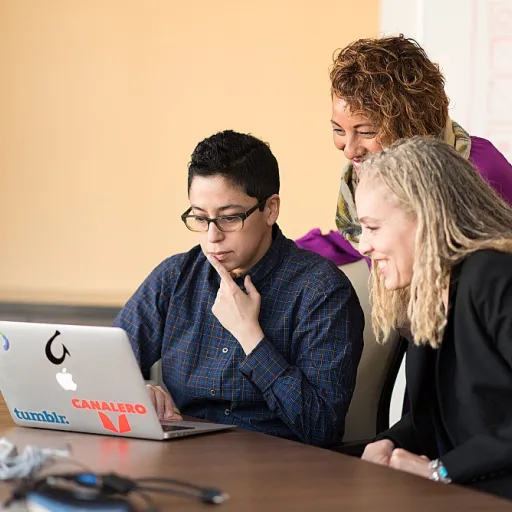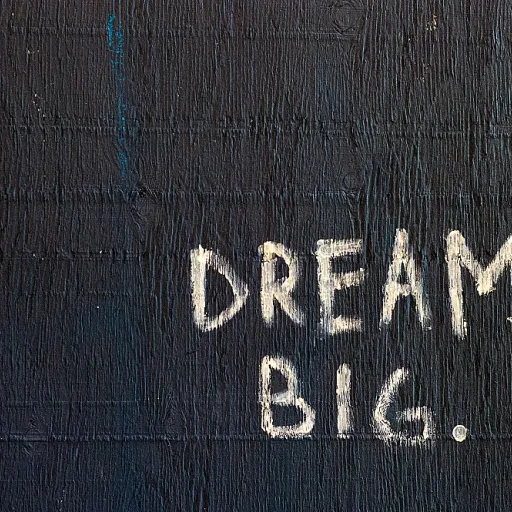
Understanding the Skills Gap
Exploring the Depth of the Skills Gap
The skills gap is a pressing issue that has been brewing for years, infiltrating many sectors and challenging both businesses and individuals alike. At its core, the skills gap represents the disparity between the skills employers need and the skills available in the workforce. This divergence is not a new phenomenon; it has existed in various forms throughout human history and has evolved alongside our rapid technological and societal advancements. From the dawn of Homo sapiens, humans have used their capacity for problem solving and social learning to adapt and thrive. These abilities have been harnessed through the power of collective learning—where humans use tools and language to share knowledge across generations, enhancing our species’ overall capacity to evolve. In the past, cultural shifts were gradual, with enough time for societies to adapt. However, today's pace of change is unprecedented, largely due to technological advancements such as video conferencing and learning management systems (LMS), which have compressed our timeline of knowledge sharing and learning development. This accelerated evolution has outpaced our traditional methods of learning, creating an undeniable gap in the skills required today compared to those taught even just a few years ago. The introduction of digital tools and online platforms necessitates a new approach to problem solving through a learning collective. The modern workforce must embrace these changes by fostering a culture of continuous learning. Failure to do so risks a stagnation not seen since primitive times. Organizations are increasingly turning to collaborative productivity software to bridge the gap and enhance their collective capabilities. Moving forward, addressing the skills gap requires not only acquiring new knowledge but also understanding how to integrate it socially. This involves leveraging the human element of learning and fostering an environment conducive to sharing experiences and insights without restrictions posed by time or language. Indeed, understanding the skills gap is the first step toward harnessing collective learning’s full potential, setting the stage for organizations to thrive in this new era of corporate learning.The Role of Collective Learning
The Evolutionary Significance of Collective Knowledge
At the heart of human advancement lies our unique ability to learn collectively, a trait that has been pivotal to human evolution. Unlike other species, homo sapiens developed a sophisticated system of social learning and knowledge sharing, which played a crucial role in our capacity to adapt and innovate. This evolution of collective learning enabled us not only to improve tools and problem-solving methods but also to refine complex practices like language and social norms.
The Foundations of Collaborative Learning in Culture
Many thousands of years ago, human beings began to form intricate social structures that facilitated the exchange of ideas and experiences. Within these early communal cultures, learning became a shared, social activity rather than an isolated experience. Through collective learning, traditional knowledge and cultural practices were passed down, allowing communities to build and adapt knowledge over time.
The Mechanics of Human Learning
Modern corporate environments have increasingly emphasized the need to harness human-like learning processes in addressing the skills gap. Drawing from human history, we can see that the contextual collective learning, as leveraged in corporate settings, evokes a learning culture that encourages the open sharing of ideas and information.
Benefits of an Interdisciplinary Learning Approach
Learning tools today, such as LMS platforms and video conferencing technologies, facilitate this language collective by allowing disparate groups to engage in meaningful dialogue, share knowledge, and reflect on shared experiences. The goal remains the same as it was in ancient times—enabling people to learn collectively and equipping them for continuous development.
Implementing Collective Learning in Organizations
Strategies for Promoting Knowledge Exchange
The concept of harnessing learning development through collective methods involves several strategies aimed at fostering knowledge sharing and enhancing problem-solving capabilities among human beings. This endeavor taps into the longstanding tradition of social learning evident in human history. Thousands of years ago, human evolution relied heavily on the ability of homo sapiens to learn collectively and share knowledge across communities. This was a key driver in the advancement of human culture and technological tools.
To implement these collective learning strategies within organizations today, it's crucial to consider the learning capacity of each individual and the group as a whole. Here’s how organizations can effectively integrate collective learning processes:
- Leverage Technology: With tools like corporate learning management systems (LMS), video conferencing, and other digital platforms, organizations can create avenues for social learning. These technologies enable employees to engage in real-time discussions and knowledge sharing, regardless of geographic barriers.
- Create a Learning Culture: Encouraging a culture that values growth and knowledge exchange is fundamental. Organizations should foster an environment where employees feel empowered to share insights and learn from each other, enhancing their collective capacity.
- Structured Learning Collective: Develop structured opportunities for learning, such as workshops, seminars, and collaborative projects, that are designed to bring people together. This structured yet flexible approach allows for organic interactions and enhances the benefits of collective learning.
Implementing collective learning effectively involves more than the tools and strategies themselves; it requires understanding the innate human propensity for social learning and tapping into our evolutionary history. By doing so, organizations can address skills development challenges, ensuring they remain competitive in a rapidly changing workplace landscape.
For more insights on enhancing skill development through innovative training methods, visit our detailed exploration on how training evolves.
Case Studies of Successful Collective Learning Initiatives
Real-World Examples of Successful Learning Initiatives
In the realm of learning development, certain organizations have successfully embraced collective learning, addressing the skills gap effectively. Reflecting back on human history, it's evident that we've been evolving our ability to learn collectively, a trait that has distinguished homo sapiens from other species. By looking at modern practices, we get a clearer picture of how this concept manifests in today's setting.
One notable example includes a corporation that integrated an innovative learning management system (LMS) explicitly designed for promoting social learning. Such systems often encourage employees to learn and share knowledge simultaneously, boosting problem solving skills across teams. This approach mirrors the fundamental principles of evolution, where change and adaptation come through shared experiences and communal understanding.
Embedding Culture of Learning
An interesting case study revolves around a multinational that has embedded a vibrant learning culture within its corporate framework. By facilitating regular social gatherings and utilizing video conferencing tools, the organization fosters a sense of community, catering to human beings' intrinsic desire to connect and learn. Such approaches enhance knowledge sharing capabilities by leveraging both digital and physical tools, showing how technology can support human evolution.
Community and Engagement
The success of these initiatives heavily relies on nurturing a sense of belonging among employees, encouraging them to be active participants in the learning process. For example, a tech company successfully launched a learning collective that thrives on employee-driven workshops, fostering both engagement and expansive learning. This mirrors the ideas proposed years ago by scholars who studied the evolution of language collective and its impact on society.
Ultimately, these case studies illuminate the benefits of collective learning and its essential role in bridging the pervasive skills gap we currently face. By understanding the intricacies of collective dynamics and embracing them within organizations, it's possible to enhance the capacity for growth, adapt to societal changes, and prepare for future trends in skills development.
Challenges and Solutions in Collective Learning
Pitfalls in Implementing Collective Learning Strategies
In the journey of integrating collective learning within organizations, several challenges come to light, reflecting both the historical progress and the present dynamics in the realm of learning development. Addressing these issues is crucial for fostering an effective learning culture.- Cultural Resistance: Despite the innate capacity of humans to engage in social learning, there's often an ingrained resistance within organizations to shift towards collective knowledge sharing. This stems from entrenched cultural norms and practices that have been in place for years, creating barriers to evolving into more collaborative, open systems.
- Lack of Suitable Tools: Before harnessing the power of collective learning, organizations may struggle with the absence of the right tools to facilitate social learning effectively. Learning Management Systems (LMS) must be robust, intuitive, and adaptable to support the demands of dynamic learning environments and not just serve as outdated repositories of information.
- Balancing Technology and Human Interaction: While technology such as video conferencing and online platforms can enhance learning efforts, organizations must be cautious of over-reliance on these systems at the expense of genuine human interaction. The social history of learning reveals that language and personal interaction have been integral to learning evolution among homo sapiens.
- Maintaining Engagement: Engaging humans in a collective learning initiative can be complex, especially over time. Despite the benefits collective learning brings, such as improved problem-solving and knowledge sharing, maintaining enthusiasm and participation requires continuous effort and innovative strategies.
Effective Solutions for Collective Learning
Tackling these challenges requires a multifaceted approach informed by both historical insights and contemporary techniques.- Adjusting Organizational Culture: Organizations should strive to cultivate a learning culture that encourages collaboration by promoting values that support collective endeavors. It involves understanding that humans have been learning collectively since the dawn of our species and leveraging this innate human characteristic.
- Investing in Suitable Platforms: Implementing advanced LMS and other learning tools that foster interaction and engagement is critical. By supporting a consistent adaptation and integration of technology, organizations can facilitate smoother collective learning processes.
- Prioritizing Human Elements: Despite the evolution of learning tools, there should be a balance between technological innovations and maintaining direct human communication. Real-time feedback and discussions can enhance the capacity to learn collectively and solve problems.
- Continuous Engagement Strategies: Leveraging insights from psychologists and learning experts, developing methods to consistently engage individuals will ensure collective learning strategies remain effective over time. This includes creating a culture of mentorship and regular interactive sessions.
Future Trends in Collective Learning and Skills Development
Anticipating the Future of Learning and Skills Development
The landscape of skills development is rapidly evolving, driven by technological advancements and the dynamic nature of the global economy. As we look to the future, several trends are emerging that will shape how humans learn and share knowledge collectively.
Embracing Technology in Learning
Technology continues to play a pivotal role in transforming learning environments. With the advent of video conferencing and advanced Learning Management Systems (LMS), organizations can facilitate more effective knowledge sharing and problem solving across geographical boundaries. These tools enhance our capacity to learn collectively, enabling a more inclusive and diverse learning culture.
Social Learning and Human Evolution
Social learning has been a cornerstone of human evolution, allowing homo sapiens to adapt and thrive over thousands of years. This evolution collective has been marked by our ability to share knowledge and learn from one another. As we move forward, fostering a culture that values social learning will be crucial in bridging the skills gap.
Leveraging Collective Intelligence
The concept of collective intelligence is gaining traction as a means to harness the power of human beings working together. By tapping into the diverse skills and experiences of individuals, organizations can foster a learning collective that drives innovation and growth. This approach not only enhances corporate learning but also contributes to a more resilient workforce.
Integrating Cultural and Historical Perspectives
Understanding the historical context of human learning and development is essential. As David Christian and other scholars have highlighted, the evolution of language and culture has been instrumental in shaping our capacity to learn and share. By integrating these perspectives into modern learning strategies, organizations can create more effective and meaningful learning experiences.
Preparing for the Unknown
As we navigate the complexities of the modern world, the ability to adapt and learn new skills is more important than ever. By embracing collective learning and leveraging the tools and knowledge at our disposal, we can prepare for the challenges and opportunities that lie ahead. The future of skills development is bright, and by working together, we can ensure that everyone has the opportunity to thrive.












